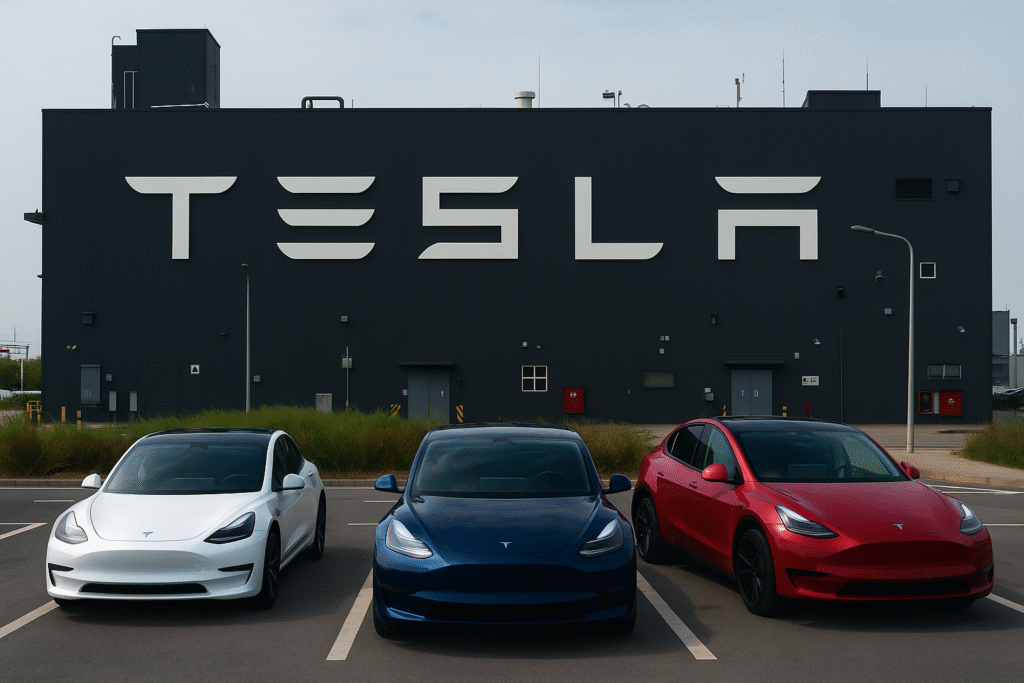Why Tesla’s July slump reflects a deeper crisis—and what the Shanghai gigafactory must do to stay relevant

Tesla’s Steep Decline: July Sales Fall Sharply
Tesla’s flagship Shanghai Gigafactory delivered just 67,886 Model 3 and Model Y units in July 2025—a year-over-year drop of 8.4% and a 5.2% decline from June, ending a brief recovery and resuming a downward trend chinaeconomicreview.
Sales from January through July totaled 432,360 vehicles, down 13.7% from the same period last year Business Insider
Why Chinese Consumers Are Snubbing Tesla
1. Price and Market Shift
- Chinese consumers are increasingly favoring affordable, locally made EVs priced around 100,000 yuan (≈ US$13,900)—double the appeal now that the government has cooled a brutal price war Wikipedia
- Brands like Leapmotor and Xpeng have capitalized:
- Leapmotor sold 50,129 vehicles in July, marking its third consecutive monthly record with 127% year-on-year growth, Wikipedia+
- Xpeng posted 36,717 deliveries, up 229% year-on-year and 6.1% from June Wikipedia
2. Local Innovation & Value
- These startups are internalizing AI tech, offering smart features and driver-assist systems at lower prices—Tesla’s offerings look expensive in comparison Wikipedia
- Xiaomi’s soon-to-launch YU7, branded a Model Y killer, combines style and pricing advantage, leading analysts to warn Tesla may be losing the “affordability battle.” Investors+1.
Can Tesla Make a Comeback?
New Models Aren’t Enough
Tesla plans to revive its China presence by launching:
- A long-wheelbase Model Y L (six seats)
- A rear-wheel-drive Model 3 with 800 km range
However, price cuts and a stripped-down Model Y variant have reportedly been delayed by months, leaving Tesla vulnerable in a rapidly shifting market Investing.com
Shrinking Market Share
Tesla’s share of the Chinese market has shrunk to around 6–7%, down from approximately 9% in early 2024—a worrisome decline in its most strategic export hub WebProNews
What Tesla’s Decline Means Internationally
Competitive Fallout
- Tesla faces intense competition not just from Leapmotor and Xpeng, but also BYD, Li Auto, Nio, and increasingly Xiaomi, several offering new EVs with aggressive pricing and superior value propositions, Wikipedia
- China has taken steps—like pricing law amendments—to prevent a renewed price war and discourage over-investment in EV production infrastructure SouthChinaMorningPost+
Strategy Reversal?
Tesla’s heading toward a larger emphasis on autonomy, robotaxi deployment, and humanoid robots as vehicle sales become less reliable, suggested by its retail delays and Elon Musk’s multi-billion stock compensation package for future leadership continuity Investors.
Why Leapmotor & Xpeng Are Winning
Leapmotor:
- Backed by Stellantis (20%), it integrates AI chips, affordable platforms, and international expansion plans for 2025–2026 Wikipedia+1.
Xpeng:
- Known for LIDAR-enhanced XPILOT feature, fast charging network (>1,000 sites), and humanoid assembly robots like Iron—clearly evolving beyond just cars Wikipedia.
Their edge: local insights, scalable AI, aggressive pricing, and bridging high-tech with affordability.
What Experts Are Saying
- Analysts at Morgan Stanley note Xiaomi’s YU7 brings Tesla-like tech at VW-like prices, creating front-line competitive disruption Investors
- A Reuters car analyst calls Tesla’s deflationary backlash and political controversies another layer of consumer resistance, not purely product-based Reuters.
Summary Table: Tesla vs China OEMs
| Dimension | Tesla Shanghai Gigafactory | Local Rivals (Leapmotor, Xpeng, Xiaomi) |
|---|---|---|
| July 2025 Deliveries | 67,886 units (–8.4% YoY, –5.2% MoM) | Leapmotor 50k (+127% YoY), Xpeng 36.7k (+229% YoY) |
| Market Share (China) | ~6–7% | Growing, often above Tesla in segments |
| Pricing Segment | Premium (~200k+ yuan) | Budget and mid-range (~100k yuan) |
| Innovation Focus | Upgrading existing platforms | Local AI, LIDAR, humanoid robots, rapid refreshes |
| Strategic Response | Introducing Model Y L and new 3 | Sustaining growth via volume and exports |
The Road Forward: Tesla’s Options
- Local Partnerships? Produce locally using Alibaba or Stellantis JV to cut costs—Tesla owns its Shanghai factory outright, limiting flexibility.
- Aggressive Pricing: Lower production costs to compete directly, but cannot cut margins indefinitely.
- Focus on Exports and Autonomy: Tesla could hedge China’s slowdown by emphasizing exports and future robotaxi businesses globally.
- R&D Acceleration: Leap motor and Xpeng push rapid innovation in AI features. Tesla must close this gap fast.
Final Thought
Tesla’s July slump is more than a numbers dip—it’s a wake-up call. As local EV champions align price, AI tech, and smart design, their popularity skyrockets. Meanwhile, Tesla’s prestige alone no longer guarantees dominance in Asia’s EV heartland.
To retain relevance, Tesla must adopt bold local strategies—or risk losing traction in the world’s biggest EV market.